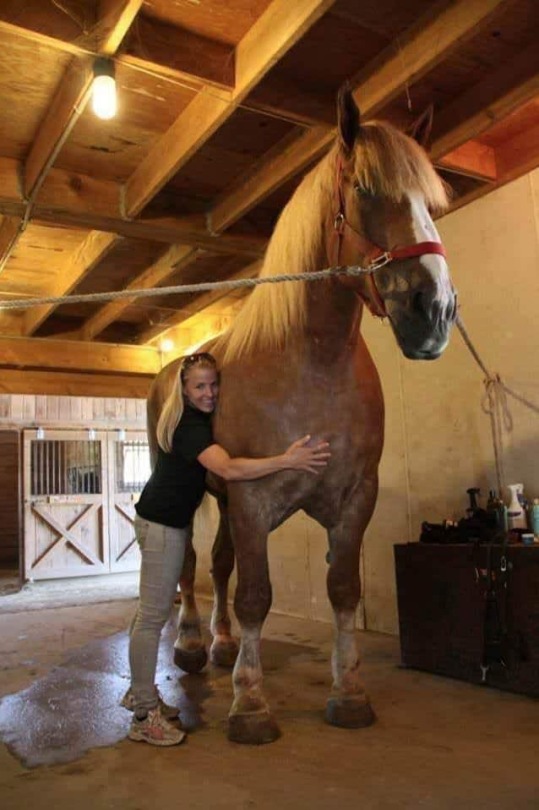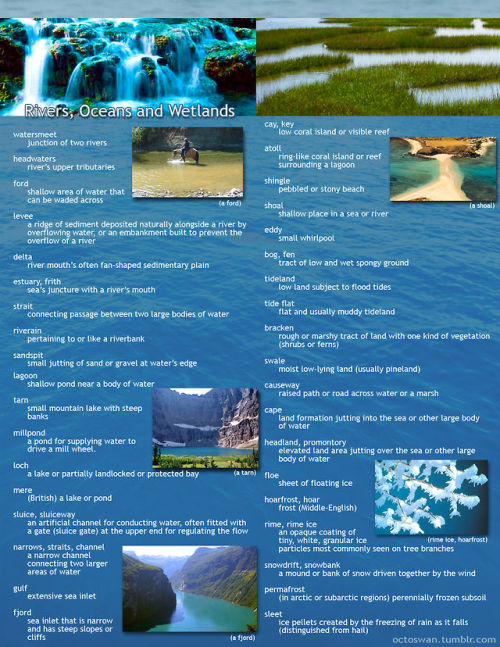
catalystcorvid
Hi I'm Crow, a 20-something hobbyist writer with a renewed love of reading. I post writing snippets, poetry & quotes from books that I like, as well as useful resources I find around the net. Accessibility and accurate sourcing are a priority. If you see me online, do me a favor and tell me to log off and go work on my novel. Icon by Ghostssmoke.
115 posts
Latest Posts by catalystcorvid


graves grow no green that you can use.
gwendolyn brooks
i always wanted someone to make blackout poetry of one of my posts but so far i have only had one blacked out to say egg. i guess you if you can't write the poem yourself you can't choose the poem
Horse terms for writers

Gelding - An adult male horse (3 years or older) that’s been neutered.
Stallion - An adult male horse (3 years or older) that is not neutered.
Mare - An adult female horse (3 years or older), used interchangeable for both fixed and unfixed female horses.
Pony - A full grown horse under 14.2 hands.
Foal - A newborn horse.
Weanling - A colt or filly that is 6-12 months.
Yearling - A horse between 1-2 years old.
Colt - A male horse under 3 years old.
Filly - A female horse under 3 years old.
Hand - Measurement of how tall a horse is, one hand = four inches.
Tack - Riding equipment.
Halter - Headgear you put on a horse to lead them, can be made of leather or fabric.
Gait - Speeds a horse can got.
Trot - Gait faster than a walk but slower than a canter.
Canter - Gait faster than a trot but slower than a gallop.
Gallop - Faster than a canter, basically the highest speed a horse can go.
Lunging - Exercising a horse by walking them in a circle, usually done with a halter and lunge rope.
Lunge Rope - A long rein/rope used when lunging a horse, typically 20-40 ft long.
Colic - Pain in a horse’s stomach ranging from mild to severe, can be fetal if not treated.
Cribbing/Windsucking - Biting onto a fence post and sucking in air, horses do this when they’re extremely bored.
Farrier - Someone who dresses and trims a horse’s hooves.
Bridle - Headgear used to control and maneuver a horse.
Bit - The metal mouthpiece of the bridle.
Frog - The triangular part of the inside of the hoof.
Rain rot - A fungal infection horses can get on their backs, easily treatable with antibiotics.
Mucking - Cleaning out a stall.
Hot blooded - Extremely energetic, excitable horses. Hot blooded horses are used for more speed driven tasks.
Cold blooded - Very low temperament, very relaxed horses. Cold blooded horses are used for more labor driven tasks.
Draft - Large, working horses.
Feathers - The long, fuzzy fur on a horse’s hooves, usually found in Draft breeds.
Just finished a book in which some characters spent a lot of time on horses, and whenever they dismounted after riding all day, they were described as sinking to the floor because their legs can’t carry them anymore, or hobbling towards the nearest chair and collapsing onto it with their whole body aching. It was so ridiculous it took me out of the story every time. These are characters who live with horses and ride nearly every day. They should be fine. They’re good riders, there’s no reason for their legs to be painfully cramped after a day on the saddle. I feel like the author was trying to add realism but only went riding a few times and felt horribly stiff and sore afterwards and assumed that’s just how you feel after a day’s ride no matter what. I promise it’s not!! Your characters should be the kind of good-tired you feel after any other type of satisfying workout your muscles are used to. Drawing on your own experience to write characters that live very different lives is such a bad bet. Maybe someone did tell her it would no longer be so painful if she just kept practising and she dismissed it as obvious horse propaganda
LETS TALK ABOUT SPARRING
I’ve read a lot of fics, have seen many shows, and have watched many movies that are completely inaccurate when it comes to sparring. NOW, i know it’s fiction, and I greatly enjoy it nonetheless, but I would like to share a few things with you, as a person who trains in Historical European Martial Arts (HEMA). There are a few general things in this, as well as stuff more focused to a certain european weapon. (this is all Historical European stuff, obviously if you’re writing for a different region, this probably won’t apply that much.)
SPARRING
-you don’t practice with real sharp swords. Never. It’s incredibly dangerous, especially since sparring is trying to practice your killing/injuring skills. In older times, you would use wood, maybe wrapped in leather or canvas to practice. Today, you use weighted nylon swords/weapons, and you usually wear a mask while doing so. Steel is and was an option, but the blade will be completely dull, and the tip will be bent over itself.
-It’s practically impossible to knock someone off their feet while sparring, unless you are hooking your foot or weapon behind their leg. It’s hard to push back and cause someone to fall, since they can just retreat back a bit.
-YOU. DON’T. SPEND. HOURS. SPARRING. ESPECIALLY WITHOUT A BREAK. It’s exhausting, the most people usually go is 10 minutes before they have a break. During Training, you only spar for about 2-5 minutes before stopping and having a rest.
-You try your hardest never to cross your feet. It’s dangerous and it unbalances you. Your opponent can take advantage of you easily.
-Usually, you want to strike your opponent with the last ¼ of your blade, basically just the tip and a little below. That’s the sharpest point, and you get the most force behind it.
-Swords aren’t super heavy. Stop the giant, huge, I-can-barely-lift-this trope. Longswords are usually 3lbs. It’s not heavy when you pick it up. However, it gets heavy when you’re holding it up above your head for a while. Swords were not made to be heavy, especially since you would have to hold them up in battle for sometimes hours.
-It’s incredibly hard to engage in witty banter and such. You are constantly moving and trying to strike your opponent. Since it’s fiction, you can do what you want, but just know that trying to have a conversation while sparring is like trying to have one while running. It tires you out even more, and usually just comes out breathless and wheezy.
-Swords are not lightsabers. You cannot try and hurt someone with just any part of your blade. It will just annoy your opponent. Now, for sparring, you will want to focus on hitting your opponent with the edge of your blade, and you won’t really ever be trying to hit someone with the flat of your blade.
-In sparring, you will get hit. And get bruises. I count five from just 2 days ago. (Also reminder that bruises don’t form for 1-3 days.) If you happened to get a hard thrust to the ribs, they will probably fracture. It happens. I haven’t had it personally, but those who’ve trained longer have. The worst injury I’ve gotten is a bruise on my chest that didn’t fade for nearly a month.
-Grip!!! You don’t clutch your sword super tight. No. It limits movement. My instructor taught me to hold firmly with the thumb, pointer, and middle finger, and use the other two as more guiding fingers. You swing your sword with your wrist, not a big giant arm movement. That is tiring and slow.
I will be focusing on using a one handed sword in this next bit, specifically a Scottish Regimental Broadsword. A basic sword to build off of.
-FOOTWORK. It’s not a super complicated series of perfectly planned out steps. It just isn’t. With Regimental Broadsword (which is what I will focus on, since it’s what I’ve trained with most), you have to have a good base (rear-weighted stance, front foot pointed at your opponent, back foot turned sideways), and then once you have that, you just have to move around and try not to get hit.
-Slipping. (Continuation of footwork). With a rear-weighted stance, the goal is to be able to move the front foot anywhere. You should actually be able to keep your front foot an inch off the ground without having to adjust your back foot. Slipping is when this comes in handy. If your opponent takes a swing at your front leg, you should be able to just slip it back to go next to your other foot, and swing your sword up to get your opponents head. Slipping is really important.
-Advance and Retreat (other continuation of footwork). While moving forward or back, you always want to feel the ground with a heel-toe movement, so you can tell if there are rocks or branches and such. Advancing, you want to move your front leg first. Retreating, your back leg.
-Traversing (last continuation of footwork)(maybe). Transversing is basically advancing in on your opponent in a circular motion. You’re trying to get close and personal. Reminder to not cross your feet. You will loose balance and probably end up getting whacked with a sword. Traversing is a spiral motion sort of. Your opponent can avoid getting trapped If they do it as well.
I will probably come back and add more soon, because there’s more I know, but can’t remember at the moment.
Some Things To Consider When Writing Weapons Training
Your character will hurt. Even if they don't get hit, it can be exhausting training, especially if they're just starting. It can be a weird set of muscles to use, and things like their shoulders will hurt if they do what a lot of people do and tense up while holding the weapon.
They will drop the weapon. There are a lot of reasons why people drop weapons--because the weapon is awkward to hold or the person isn't used to holding them, because it gets hit out of the person's hand, because their own hand gets hit, etc--but it happens.
People get hit by accident all the time--including the person holding the weapon. When I've done jō practice, I consider it a success if I don't hit myself with it while I'm practicing. And even when doing controlled sparring or paired katas, people still end up hitting each other, especially on places like the hand.
Practice weapons still hurt. Depending on what you're doing, they're usually made of either wood or rubber rather than metal, but just because they're not metal, it doesn't mean they don't hurt. Bruises are really standard, especially if you're practicing something like knife fighting where you're doing a lot of hand-to-hand blocking.
The goal of training is not to hurt your opponent. People who (intentionally or through carelessness) hurt their sparring partners are bad at training and will probably be kicked out of it or at least get a very strong talking to. Good training will also teach them how to train without getting hurt and strongly discourage doing things in a dangerous way.
What they wear will differ widely depending on the discipline. HEMA and fencing tend to have a fair amount of protective gear (helmet, etc.), as does kendo, while disciplines like aikidō, iaidō, and jūjutsu are more likely to have people wearing a gi or hakama. This will impact how they feel about hitting opponents--it's always riskier to hit someone in a place with no protective gear.
Some weapons' training is primarily defensive, and some is primarily offensive, and some is both. Some training (knife defense, gun defense) is primarily about disarming someone with one of those weapons, where the actual use of the weapon is just as a training tool. In those cases, the specifics of the attack are usually emphasized less than the specifics of the defense. HEMA and fencing are much more offense-focused, with the goal being more about landing a hit. In forms like that (or in a similar fictional form), you'll see the mentality that the best defense is a good offense, as opposed to the mentality that the best defense is a good defense (or the best defense is running away).
Knowing one form of weapons training is (often) helpful in learning another. Even while they differ a fair amount, different weapons styles can often use similar patterns in terms of strikes, blocks, and steps. Part of this is that there are only so many useful places to hit a person and only so many ways to step. There are other things that are fairly universal as well, like awareness of your blade and your opponent's blade, awareness of your body, and awareness of relative distance.
Yay, unsolicited advice time! Or, not really advice, more like miscellaneous tips and tricks, because if there's one thing eight years of martial arts has equipped me to write, it's fight scenes.
.
Fun things to add to a fight scene (hand to hand edition)
It's not uncommon for two people to kick at the same time and smack their shins together, or for one person to block a kick with their shin. This is called a shin lock and it HURTS like a BITCH. You can be limping for the rest of the fight if you do it hard enough.
If your character is mean and short, they can block kicks with the tip of their elbow, which hurts the other guy a lot more and them a lot less
Headbutts are a quick way to give yourself a concussion
If a character has had many concussions, they will be easier to knock out. This is called glass jaw.
Bad places to get hit that aren't the groin: solar plexus, liver, back of the head, side of the thigh (a lot of leg kicks aim for this because if it connects, your opponent will be limping)
Give your character a fighting style. It helps establish their personality and physicality. Are they a grappler? Do they prefer kicks or fighting up close? How well trained are they?
Your scalp bleeds a lot and this can get in your eyes, blinding you
If you get hit in the nose, your eyes water
Adrenaline's a hell of a drug. Most of the time, you're not going to know how badly you've been hurt until after the fact
Even with good technique, it's really easy to break toes and fingers
Blocking hurts, dodging doesn't
.
Just thought these might be useful! If you want a more comprehensive guide or a weapons edition, feel free to ask. If you want, write how your characters fight in the comments!
Have a bitchin day <3
So you want to write about horses.
Or you're writing and horses show up. Or its a pre-industrial fantasy and your characters have to get somewhere. Or you have a faint idea of your MC's love interest showing up on a white stallion.
Whatever the cause, you're writing, and a horse appears. But you know nothing about horses. I can help.

This is a horse. Horses come in many sizes.

^ Big Jake, a Belgian Draft horse, and a roughly 5 foot woman for scale.

1 hand = 4 inches = 10.16 cm
Once a horse is smaller than about 14.2hh, it is generally considered a pony. In the modern day, ponies are not considered suitable for adult riders due to weight and height issues. Some pony breeds, such as Welsh, Fjords, ect. are known for being sturdy, and can more easily carry adult sized humans. Miniature horses should never be ridden by adults.

^The only suitable 'riding' a miniature horse should do
The above graphic mentions that horses are measured from the top of the withers, not the top of the head. But, what are withers?

The withers are where the horse's shoulders meet the spine, and the neck becomes the back. Withers are incredibly important for saddle placement, as a badly placed saddle in this area can prevent a horse from moving its legs properly, cause a large amount of pain, and even damage a horse's spine. Speaking of spines, this is a horse skeleton, with the withers pointed out.

Horses have four legs. Horses cannot have any fewer than four legs. They are obligate quadrupeds. This is, in part, due to their weight, as well as the construction of their legs and hooves. This is to say, that while cats, dogs, and other animals can be amputees, a horse, short of some incredible magic solution, cannot. Even a broken leg bone will cause a huge amount of problems, as all of the weight that leg would usually hold must be shifted to the other feet, and this causes a condition called laminitis, where the tissue that holds together the hoof and the toe bone becomes inflamed, and begins to separate. Once this happens, the hoof tissue dies from lack of blood, and the bone begins to rotate. This is extremely painful for the horse, and so often the best solution for a horse with a broken leg is to be spared that pain. Famous American racehorse Barbaro experienced a complex broken bone, which began to heal fine, but complications from laminitis in two of his other legs caused him to be put down. This is why media will almost always show a horse with a broken or injured leg being 'taken care of'.

^Barbaro, in his prime. Even the best veterinary medicine couldn't save him.
Now, racehorses like Barbaro are moving at the fastest speed and the fastest gait of the horse, the gallop. The patterns that horses move their feet are referred to as gaits, with most horses having four, with some breeds having five or more.
The first gait and the slowest is the walk. In the walk, all four feet move independently, which leads it to be called a four-beat gait, as the footfalls make a sort of drumbeat on the ground.

The next gait is the trot, a two beat gait with diagonal pairs of legs moving together.

^Diagonal pairs marked in red and blue
The trot is a very bouncy experience for the rider, and can be uncomfortable. Some riders will rise and fall with a pair of diagonal legs, called a posting trot, some will stand in their stirrups, called a two-point or jump position, and some will sit the trot, which requires a lot of core strength (seriously, if you want a strong core, screw the gym)
The third gait is the canter, a three-beat gait with a single diagonal pair. This gait is ridden sitting, and feels a lot like going over waves on a jetski. There is a rise, a scoop, and a fall feeling. The canter is also called a lope in Western riding, they are the same gait.

^diagonal pair marked in red
A gallop is sometimes considered a variation on canter, as it is similar save for the legs actually moving in a four-beat pattern. As you can see with the image of Barbaro, all four of his feet are moving in different patterns, at different times, even though the gallop is really a four beat version of the canter. Riders in the gallop rise off the horse's back into a raised position, which allows the horse to use the full length of its spine and musculature to get as much reach and speed as possible. It feels like riding on top of a train barreling down the tracks, at least until your horse takes an unexpected turn and the ground is suddenly the only thing you're riding.

^ I've been there. The trick is to push away and hit the ground rolling, it hurts less that way. And don't land on your head.
That's all for this post. I'll have more when I feel like it, and send me questions if you want to know more about specific things or need a writing question answered
Reblogs welcome and encouraged
@jacqueswriteblrlibrary for wider reach
you can always give your blorbos mobility aids btw . you can always make them disabled its always morally correct
sometimes a theme recurs in your work without your permission. and sometimes it reaches a threshold where you're like. well now i think this is saying something about me against my will. don't know what though
Just a quick note from your friendly neighborhood bookworm/indie author
if you use kindle for the majority of your library, they will be shutting down the function that allows you to download your files and transfer them via USB on the 26th of February. Which doesn't sound like a huge deal, but this also means that if a book is taken off Amazon for any reason—like it being banned—they can scrape it off your kindle as well. So maybe backup your library?





I made these as a way to compile all the geographical vocabulary that I thought was useful and interesting for writers. Some descriptors share categories, and some are simplified, but for the most part everything is in its proper place. Not all the words are as useable as others, and some might take tricky wording to pull off, but I hope these prove useful to all you writers out there!
(save the images to zoom in on the pics)
Friendly reminder to artists, writers, and anyone else working at a desk:
Stand up, uncrunch your back from whatever pretzel cosplay you were doing, and take a quick walk to get water, eat a snack, or use the bathroom.
Rain by Raymond Carver
Woke up this morning with a terrific urge to lie in bed all day and read. Fought against it for a minute. Then looked out the window at the rain. And gave over. Put myself entirely in the keep of this rainy morning. Would I live my life over again? Make the same unforgiveable mistakes? Yes, given half a chance. Yes.
Where to Find Free, Legal Books
If you have access to a public library and/or have college credentials;
Libby - Ebooks, digital audiobooks, and magazines from your public library. Free, but requires a library card. Materials aren't infinite, so popular titles will often have a several week long waitlist. If you're in the US (or sufficiently crafty) you can sign up for a free card from the Queer Liberation Library.
Hoopla - Another service often bundled with a library card. The selection is smaller than Libby, but you have a limited number of instant borrows per month to cash in.
EBSCOhost Research - Ebooks and research materials, usually offered through a college. Where I do most of my reading lately, TBH.
Worldcat - Browse the world’s libraries from one search box. Easiest way to find out where to go to check out a book if you can't find it at your usual spot.
US residents will likely have a public library near them, but if you cannot go in person and sign up, there are a number of public libraries that don't require anything but a local address to get an Ecard. The libraries that offer this change frequently, so ask around.
Also keep in mind that US public libraries don't typically purchase self published material. If you're looking for your favorite tumblr author's book, you might want to try the links below instead.
If you can't get a library card (or couldn't find what you're looking for)
Open Library - Large collection of ebooks. Some materials may not be available currently due to ongoing legal issues.
Project Gutenburg - Another huge collection of ebooks, probably the most well-known option on this list.
Standard Ebooks - Professionally formatted public domain ebooks (sourced from places like Project Gutenburg but then turned into dynamic epubs)
LibriVox - Public Domain Audiobooks. Extremely limited library, but provides a rare service.
Audible Free Trial - Amazon offers a free trial of their service, with one free title on signup. You need a viable payment method to get access, but you keep the book even after you cancel. Don't give Amazon your money, folks.
I'd also recommend trawling youtube and soundcloud for user-made audiobooks. The quality varies, but I've been surprised at the results.
Other cool resources
StoryGraph - A non-Amazon GoodReads alternative, for those who like to challenge themselves to read more or enjoy writing book reviews.
Banned books list - Around since 1994 and currently still updated weekly, this site showcases books that are either banned or have been attempted to have been banned somewhere in the US. Some are available to read for free on site.
it’s cause you always on that borrowing grief from the future
FREE Fantasy Creative Writing Planning Guide
Do you want to write a fantasy story but don't know how to start? Have you already started a fantasy story but hit a snag in the plot?
Well, have I got a PDF for you! Take a look--it's free! ✨WOW✨
(Opens to Kofi--resource is pay what you want).

Okay, marketing aside, I've been sitting on this for a while now. I used to teach a high school class on fantasy literature, and I miss creating stuff for it. I have all these resources and knowledge, and I'm not doing ANYTHING with it. So, I figured I'd put some resources together and make them available to the vast audience of the Internet.
This is the first of the resources I'll be making. It's a 39 page PDF with fillable worksheets and examples, and I threw in a separate black-and-white document for easy printing. It guides users through some basic planning principles that can help any writer, from beginner to expert, get their plot together.
I hope to make more in the future covering character, plot, the Hero's Journey, rhetoric, and maybe even editing and feedback. It takes a while to make these, and some of the future documents may cost money because I'm ✨lacking funds✨ but I do hope to continue with them. I'll also make some resources for constructed languages eventually if that's anyone's cup of tea.
So far, feedback for this resource has been good! Share widely with anyone you know who may be sitting on a fantasy story that needs to see the light of day. Please comment with feedback (I'd love to hear about what you'd like to see in the future or how I can improve documents like these), and leave a tip if you'd like!
The three-ring binder is the apex of book technology, by the way. All the advantages of a codex, plus you can add, remove, and reorder pages at will - pages which you can furthermore protect from damage in transparent sleeves, and store commentaries, notes, and other paratextual addenda behind them without obscuring the primary content. Truly the queen of codices. Reblog if you love the three-ring binder.
Me: I want to create! But…it’ll be bad.
Voice inside of me: So let it be bad.
Me: Let it be bad?
Voice inside of me: Let it be bad.
Me: Let it be bad!





































